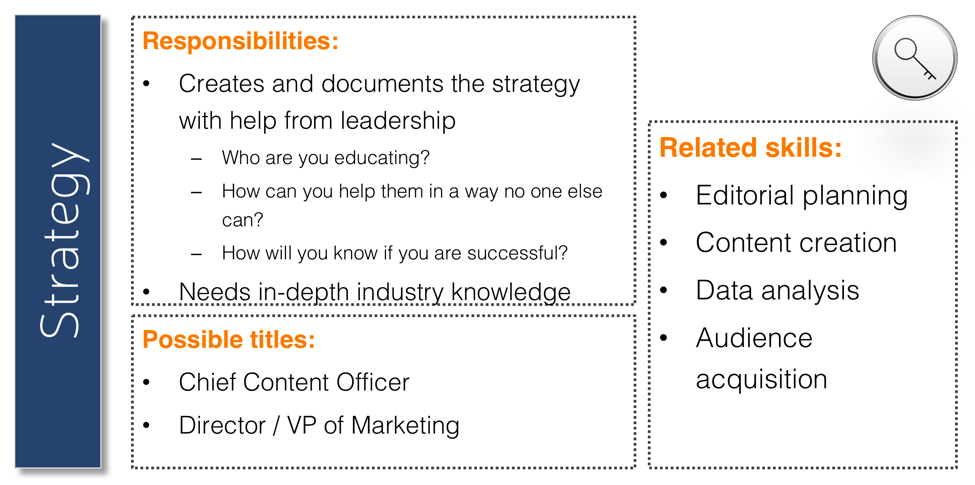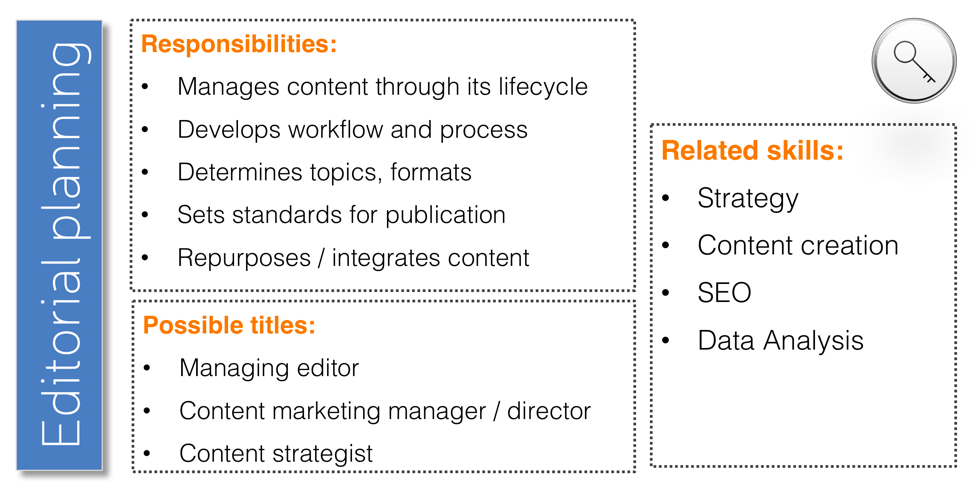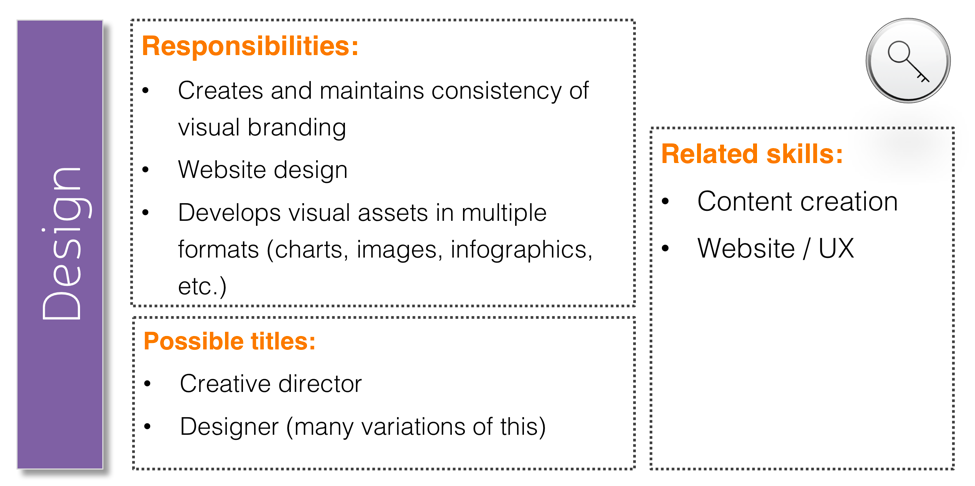Author: Michele Linn / Source: Content Marketing Institute

Each year, CMI founder Joe Pulizzi covers the essential roles you need on your content marketing team. It’s one of those posts that is consistently well received because it hits a nerve: Whom do you need on your team to make content marketing work in your organization?
I had the pleasure of thinking through this question in more detail when Joe asked me to speak about creating the ultimate content marketing team at Content Marketing World 2017. While I shared a framework useful for restructuring your team and/or making hiring decisions (which will be published shortly on this blog), today we’re digging into the various skill areas your team needs to cover.
But before we do that, a bit of explanation …
Maturity level
While Joe typically offers a (helpful) laundry list of core competencies any content marketer needs, my list has a twist: The skills are broadly classified based on where you are within your company’s content marketing maturity. As our research reveals, about one-third of marketers are in the young and first steps category, another third are in the adolescent stage, and the last third characterize themselves as mature or sophisticated.

As such, the roles are grouped into these three categories. By no means do you need to approach your hires in this order, but, generally, it makes sense to prioritize your hires based on what is needed first or most.
Responsibilities
Each skill area includes a high-level look at some of the responsibilities each requires. It’s not a comprehensive list, but it should give you a sense of what type of work is needed. You can refer to these responsibilities as you develop job descriptions.
Possible job titles
This list is not organized by job titles because, quite frankly, there is little standardization across the industry. I recall surveying 25 to 30 people in charge of content marketing programs, and every single person had a different title. While I don’t think titles should matter, I know they do, so possible job titles are offered to help you not only think about how to classify people on your team but also to help you mine job listings (think Monster, Indeed, LinkedIn) for ideas if you do need to hire.
Gone are the days when companies are hiring someone who can do one job and one job only. In most organizations, hybrid professionals exist who have skills in multiple areas. The related skills for each primary skill area can help you think about individuals who can play multiple roles, but, again, there are no hard and fast rules.
New and young companies
You’ll need to cover this first set of skills when you are starting out – or if you are struggling and not sure where to go. Every team needs to have someone who possesses these essential skills (as noted with the key icon). But you will not likely have one person per skill when getting started. Rather, you’ll have a leader or jack of all trades who will do many of these things.
Strategy development
It’s imperative to start out with a solid strategy (and, no, a strategy is not your editorial calendar). Often, your strategy is created in conjunction with the leadership team, and it sets the stage for your entire program.
While there is no one right way to create a strategy (although this one-page plan may help), it should at least answer these three questions:
- Who are you educating?
- How can you help your audience in a way no one else can?
- How will you know if you are successful?

Editorial planning
First comes strategy, then comes editorial planning.
Your editorial plan is everything you need to do to bring your strategy to life. The topic of editorial planning is far bigger than one section of this article can encompass, but below are some of the key things it entails.
In many cases, you have multiple people on your team who assist with editorial planning – and people who come at it from different perspectives. For instance, someone on your team must think about all the new content you are publishing and answer questions such as:
- What topics should we cover – and how should we cover them?
- What formats are best for our purposes?
- What is our internal process or workflow for creating this content?
- What are our standards for publication, such as writing guidelines and style guides?
Other editorial planning professionals look at the content across the life cycle and consider questions such as:
- What is our taxonomy? How will our content be organized? (See the skills for digital librarian below to learn more.)
- How will we determine what content we keep, update, or remove?

Content creation
When I chat with marketers about their teams, the biggest cry I hear is for someone to create the content: often writers, but also videographers, podcasters, etc.
While hiring an exceptional content creator is absolutely vital, make sure you have your strategy and editorial plan in place first so the talent you hire can focus from the start on content that will further your mission. Never start your team with the content creators.
Of course, not all writers (or any type of content creators) are created equal. Some writers excel at writing persuasive copy that can be used in emails and on your websites; some create masterful stories that dig into personalities; and others craft prescriptive, how-to content. Figure out what you need and find the person who best suits those needs.
And, while I expect this opinion to be an unpopular one, in most cases it’s key to hire content creators who have a deep understanding of your industry. In this age of so much content, you need the best content on your topics, and people who are most experienced in your industry are more likely to get you there efficiently and effectively.

Design
Ah, design. While I was originally rolling design under content creation, I decided to break out this skill because often the designer is a different person than your writer, podcaster, etc. (I, for one, can’t design myself out of a box, so I’m always grateful for CMI Creative Director Joseph Kalinowski.)
Like writers, designers often excel in different areas. Some are fabulous with website design, others rock data visualizations, and others have a penchant for e-books (just to name a few).
Many companies have designers in-house, but if you are just getting started, you may be tempted to crowdsource your design. You can learn more about the pros and cons of that approach from JK himself.

Editing and proofreading
Another essential hire is a proofreader. In fact, this is the person I would hire after you have your lead person who often focuses on strategy, editorial planning, and content creation. I learned from (painful and embarrassing) experience that you simply can’t do your own writing and editing (well, you can’t do it well). Always have that second set of eyes to check for grammatical errors.
As your practice grows, you may not only need a proofreader but also an editor (or editors), too. While most editors have a solid understanding…
Audience Team
The digital audience insights you need to build, manage and market to your digital audiences.

